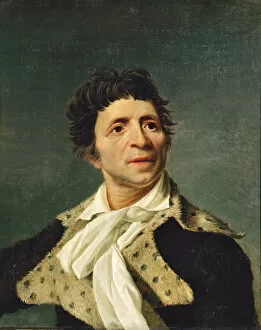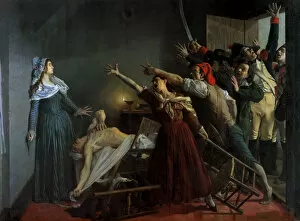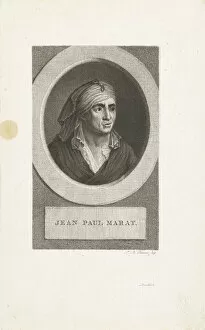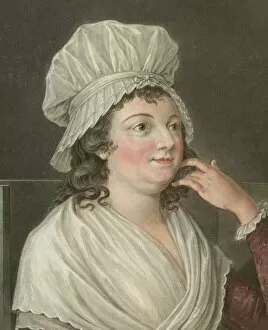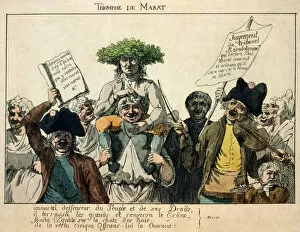Leader Of French Revolution Collection
"Unveiling the Leaders of the French Revolution: A Tale of Passion and Rebellion" Step into the tumultuous era of the French Revolution
For sale as Licensed Images
Choose your image, Select your licence and Download the media
"Unveiling the Leaders of the French Revolution: A Tale of Passion and Rebellion" Step into the tumultuous era of the French Revolution, where two iconic figures emerged as symbols of change and upheaval. Charlotte Corday, a brave and determined woman, embarked on her fateful journey to alter history forever. In Giacomo Aliprandi's haunting depiction titled "Charlotte Cordays Passage to the Scaffold, " we witness her final moments before facing her destiny. Meanwhile, in an anonymous masterpiece known as "Death of Marat, " another leader takes center stage. Jean-Paul Marat, a fervent revolutionary whose fiery words ignited a nation's spirit, met his tragic end at the hands of Charlotte Corday. The artist captures this pivotal moment with raw emotion and intensity. Delving deeper into their lives, we encounter portraits that reveal their essence. An anonymous portrait showcases Charlotte Corday's enigmatic beauty while hinting at her inner strength during those turbulent years between 1793 and 1798. Similarly, another anonymous portrayal immortalizes Jean-Paul Marat's piercing gaze—a reflection of his unwavering determination during these transformative times. The events surrounding these leaders' clash are further brought to life through various artistic interpretations. Alfred Dehodencq masterfully depicts "The Arrest of Charlotte Corday, " capturing the tension leading up to her capture with vivid brushstrokes. Jacques Louis David's powerful work titled "Marat assassine" portrays Marat in death—an homage to his martyrdom for revolution. As time passed, artists continued to pay tribute to these influential figures who shaped France's destiny. Anonymous sculptors crafted a bust that immortalized Marat—his visage forever etched in stone as a symbol of rebellion against oppression. Even renowned artist Edvard Munch couldn't resist exploring this captivating story centuries later; he created not one but two renditions—"The Death of Marat" and "The Death of Marat II.


